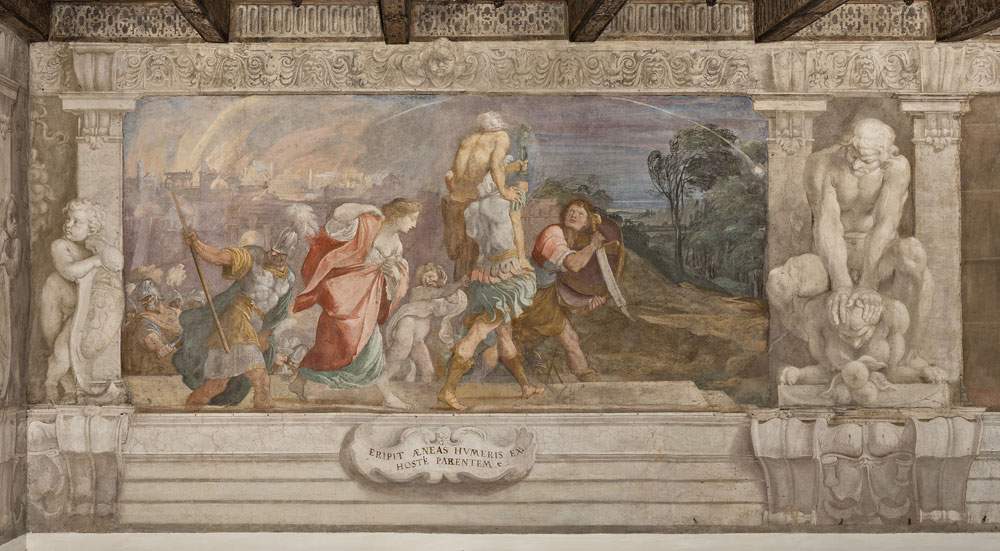To celebrate the 400th anniversary of Ludovico Carracci’s death, Bologna’s Palazzo Fava presents through Feb. 16, 2020, an exhibition that places in dialogue the frescoes of Jason and Medea, the first collective work by Ludovico, Agostino and Annibale Carracci, and Aeneas created by Ludovico and pupils, with thirty-one works of modern and contemporary art from the Fondazione Carisbo collection. Twentieth-century paintings, sculptures and installations, many of which have never been exhibited to the public.
The exhibition Il fregio dei Carracci - Opere a confronto (The Carracci Frieze - Comparing Works ) stems from research work in the vaults, conducted by Benedetta Basevi and Mirko Nottoli, aimed at indidividing similar themes between the works on display and the Carracci frescoes. Galileo Chini’s Mad Dictator, exhibited for the first time, and executed on the occasion of the celebrations of Hitler’s arrival in Florence in 1938, refers in its monstrosity to the Polyphemus encountered by Aeneas and his companions in Sicily; Nicola Samorì ’s nudes testify to the return of the classical in art history, as was the intention of the three Carraccis. The tumult of Giuseppe Maria Crespi ’s Battle can be compared to that of Jason’s fighting, while Mimmo Palladino ’s Salome to Dido of theAeneid.
Also among the works on display are Fortunato Depero ’s Pietre Alpestri and Marco Lodola’s Scultura Luminosa, which in their bright colors recall the game theme of the friezes in the Cesi Hall, including archery contests, races and tournaments from the Aeneid.
On the occasion of the exhibition, the main floor of Palazzo Fava was reopened to the public and the first complete documentation of the palace’sdecorative apparatus, edited by Angelo Mazza, was published.
“With this new exhibition, in celebration of the 400th anniversary of Ludovico’s death, we wanted to enhance the Carracci frescoes and their iconography, starting with the choice of pictorial subjects. Indeed, it cannot escape the fact that the Bolognese celebration of Aeneas the progenitor of the Romans, in what is the largest Italian cycle on the Aeneid, sounds like a political message of professed subservience to the Church State, of which the city was, after Rome, the most important urban center. Just as in the impressive naturalism of the cycle of Jason and Medea we can see a tribute to the renewed interest in the study of nature, of which the Bolognese Ulisse Aldrovandi was one of the main proponents,” explained Angelo Mazza himself.
For info: www.genusbononiae.it
Pictured is the escape of Aeneas from Troy depicted in Carracci’s frescoes.
 |
| Carracci frescoes in Palazzo Fava in dialogue with modern and contemporary works. |
Warning: the translation into English of the original Italian article was created using automatic tools. We undertake to review all articles, but we do not guarantee the total absence of inaccuracies in the translation due to the program. You can find the original by clicking on the ITA button. If you find any mistake,please contact us.